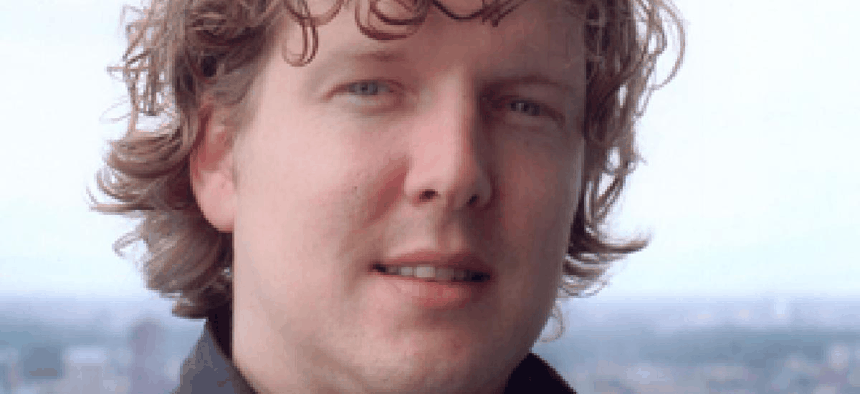Koen Olthuis | Survival Guide: Perspectives from the field

To ease the effects of flooding in the Netherlands, Koen Olthuis and Rolf Peters founded the Waterstudio.NL, an architectural firm that specializes in building in wet areas. One of the firm's first, and perhaps most innovative, designs is an amphibious house.
With much of the Netherlands below sea level, flooding has been a chronic problem for centuries. Global climate changes have only exacerbated the problem.To ease the effects of flooding, Koen Olthuis and Rolf Peters founded the Waterstudio.NL, an architectural firm that specializes in building in wet areas. One of the firm's first, and perhaps most innovative, designs is an amphibious house.A cross between a house built on piers and one that floats, the amphibious house rests on piles when the water level is low. When the water rises, the buoyant foundation lets the house come loose from the piles and float. When the water level recedes, the house slowly sinks back onto the piles. (Check out the floating designs at http://www.waterstudio.nl/en/architecture.html).A development of amphibious and floating houses has been built on the banks of the Meuse River in Maasbommel in the Netherlands. Olthuis talked with Staff Writer Doug Beizer about innovation and problem solving. What kind of resistance does the amphibious design get? We have to explain a lot about the safety of the concept. People from outside the Netherlands have difficulties accepting the technology. The Dutch have built houseboats for more than 80 years, so techniques have been developed over that time.The techniques make it possible to have the same public utilities in a floating house as one on land. Gas, water and electricity enter the house via flexible tubes. Sewage is first put through a cutting system, and then pressured out of the house through a flexible tube. Why was such a radically new design needed to deal with this centuries-old problem? In the Netherlands, nearly 30 percent of the land is reclaimed from the sea. Engineers have dealt with water issues for hundreds of years. Because the reclaimed land is below sea level, we have to pump out water constantly to keep dry feet. We face the effects of the changing climate, and we are getting more water from rain and through our rivers. At the same time, cities are expanding. What reaction have you gotten on the design? Holland is an experimental playground for living with water. The Dutch Minister for Water, identifying 15 areas in riverbeds where developers and architects were challenged to design innovative water-resistant concepts, confirms this statement. So the houses and roads have to be able to adapt to the possibility of rising water. We have gotten a lot of reaction from developers outside the Netherlands. Last month we had people from Australia, England and Hungary who wanted the concept of amphibious houses in their projects. This concept makes it possible for them to build in flood zones and still have houses close to the water during dry periods. Did computers or other technology play a significant role in making the design a reality? We are totally dependent on computers in our company. Our designs and ideas are somewhat different from the concepts that developers are used to. The computer helps us explain our ideas with 3D visualizations and animations. That lets us show the client, in a very early stage of the process, the image that he can expect after the project is finished. For the amphibious houses, we made animations that show the houses rising up from their piles during a flood. Do you think the amphibious design could have applications in the United States and other countries? 300 of the biggest cities in the world are located in delta areas or at waterfronts. For most of these cities, the water level is not static, but dynamic. If the fluctuation is more then a few meters, and the frequency of the fluctuation is less then a few years, then the concept of amphibious houses is a perfect solution. For the United States, this concept would be very effective in New Orleans. What advice do you have for anyone who must devise ways to deal with modern problems such as security and power consumption? Do not underestimate the power of innovation in changing everyday situations. People working in the computer and technology fields have the power to adjust to living in a new situation because of the changing climate. We are sure that we have picked an innovative market where we still have not found any limits. At Waterstudio.NL, we say the future is wet, the future is great.

WT:
Olthuis:
WT:
Olthuis:
WT:
Olthuis:
WT:
Olthuis:
WT:
Olthuis:
WT:
Olthuis:

Koen Olthuis, architect and designer of the Amphibious House
Courtesy photo
WT:
Olthuis:
WT:
Olthuis:
WT:
Olthuis:
WT:
Olthuis:
WT:
Olthuis:
WT:
Olthuis:
NEXT STORY: Inside track | New federal projects

